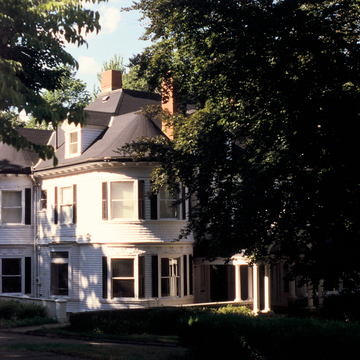Munroe Hill was the site in the 1870s of the first large-scale subdivision for residential
Businessmen and professionals, many of whom commuted to Boston on the railroad, later settled an elevated area south of Bloomfield Street from 1891 to approximately 1910. Here about twenty substantial Queen Anne, Shingle Style, and Colonial Revival dwellings intermingle with later houses, reflecting not only the relative wealth of owners but also the stipulation in the deeds that buildings cost $3,500 above the foundation. Architects including Henry B. Ball, Chapman and Frazer, Lois Lilley Howe, Samuel D. Kelley, and Edward D. Reed designed these houses. The Warren Sherburne House by Kelley at 11 Percy Road (1893, NRD) is a particularly exuberant example of late-nineteenth-century eclecticism, combining elements of all three of the popular styles, and is noteworthy for the extensive use of curved glass provided by Sherburne's glassworks. The interior features a classic living hall with rich, dark woodwork, inglenook, and fireplace. The living room, by contrast, has white-painted woodwork inspired by colonial architecture.
Comparable contemporary neighborhoods on Meriam Hill, Winthrop Road, and portions of Massachusetts Avenue also attest to Lexington's late-nineteenth-century growth as a suburb.







